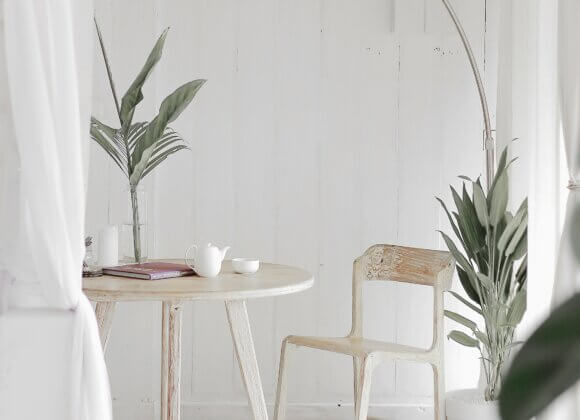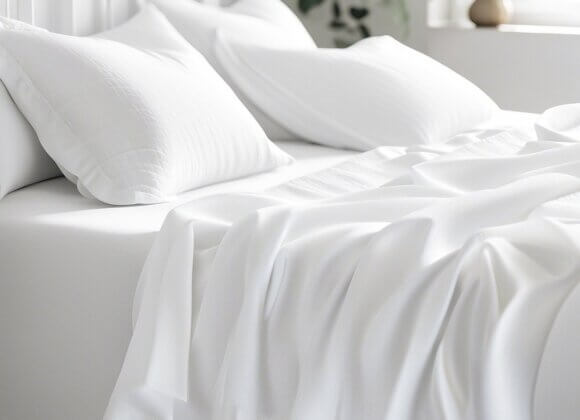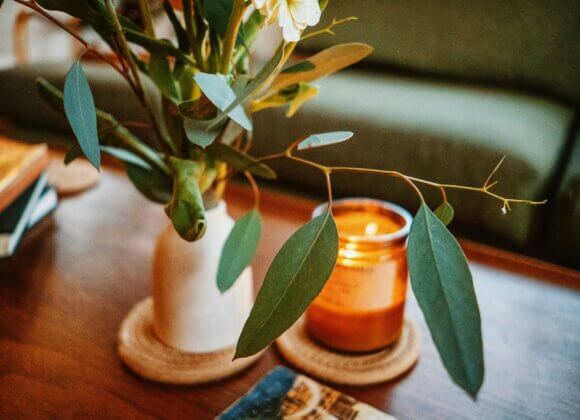They create a pleasant atmosphere and are also good for the environment – natural materials are becoming increasingly popular for furnishings. This applies not only to wood and stone, but also to cotton, linen, silk and co. We’ll tell you everything you need to know about the most popular of these natural materials.
Natural materials have been experiencing a renaissance for some years now. Wood and natural stone are finding more and more fans – whether as a building material or as a material for furniture. The same applies to natural fibers such as linen, cotton, silk, wool and hemp, which are used to make home textiles. No wonder, as these materials, which are used to make bed linen, blankets, curtains and carpets, have numerous advantages: They create a pleasant atmosphere, are also sustainable, breathable, heat and moisture regulating and well tolerated by allergy sufferers.
Linen – a fabric with a long history
Garments made from linen were worn more than 30,000 years ago. The fabric is made from the fibers of flax plants in a complex process. Pure linen consists of 100 percent flax fibers, whereas half-linen is a mixture of linen and cotton. The natural fiber is considered durable, hard-wearing and less sensitive to dirt, as well as being breathable, antistatic and hypoallergenic. Further advantages are its light resistance and washability. Last but not least, according to Die Umweltberatung, the production of linen, in contrast to cotton, is more water-saving and also more environmentally friendly, as pesticides can usually be avoided due to the pest-resistant stems of the flax plant.

Cotton – a natural material with light and dark sides
This natural material has also enjoyed great popularity for thousands of years. The fabric, which has many friends because of its robustness and high wearing comfort, is made from the seed fibers of ripe cotton fruits.
However, there are some serious disadvantages, such as the high consumption of resources. For example, around 10,000 liters of water are used to produce one kilogram of conventional cotton alone. Added to this is the water consumption for the dye bath in which the fabric is dyed. In addition, pesticides and chemicals are used both in the cotton fields and during processing. Incidentally, according to Die Umweltberatung, around three quarters of the world’s cotton harvest is genetically modified. As a result, the plants do not produce seeds and cotton growers have to buy new seeds every year.
Another point of criticism is the poor recyclability of cotton – which is precisely why the EU is currently considering a ban on the natural fiber. For those who don’t want to miss out on the benefits of cotton, we recommend organic cotton in terms of sustainability. Its ecological footprint is significantly lower – however, according to Die Umweltberatung, only one percent of cotton is grown worldwide. Not only is the use of synthetic chemical fertilizers and pesticides prohibited, but water consumption is also up to 91 percent lower than in the cultivation of conventional cotton.
Silk – with shine and glory
The shimmering silk is still considered luxurious and elegant. But the fabric doesn’t just impress with its appearance: Among other things, silk is temperature-regulating, dries quickly, is lightweight, temperature-regulating and generally anti-allergenic. However, one thing should not be forgotten: silk is a natural animal fiber that is obtained from the cocoons of the silkworm. To ensure that the cocoon is not destroyed when the butterflies hatch, it is treated with hot air or steam during the production of cultivated silk – this kills the pupating butterflies.
In addition, conventionally produced silk is also treated with heavy metal salts or plastics to make it heavier. “In the production of organic silk, animal welfare standards are taken into account and hazardous chemical residues are avoided,” says Die Umweltberatung. For Peace or Ahimsa Silk, for example, the cocoons are only processed after the caterpillars have hatched. Incidentally, wild silk is also only obtained after the caterpillars have hatched on their own.

Hemp – robust and gentle at the same time
This natural material can also look back on a long history. Obtained from the stalks of industrial hemp plants, the fabric impresses with its longevity, robustness and durability. At the same time, the natural material is skin-friendly and temperature-regulating. From an ecological point of view, hemp scores points because the undemanding plants grow on almost any soil and are also very productive. The amount of fibers produced is three times higher than that of cotton.
Wool – warm and cozy
Wool is also a natural and renewable material that is often used as a raw material for plaids, blankets or carpets, for example. Its popularity lies in the resilience of the material: wool is naturally water and dirt repellent, but also flame retardant. It is also soft and breathable, absorbs moisture and does not absorb odors.
Related posts:
Viennese craftsmanship in pyjamas
These are the living trends for 2025
Furniture care: how to keep your furniture looking good for a long time













